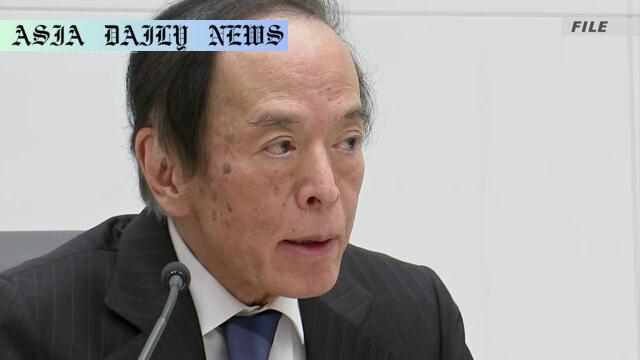BOJ decision: The Bank of Japan maintains 0.5% rate target amid economic uncertainties and announces tapering bond purchases from 2026.
BOJ decision to maintain interest rates at 0.5%.
Plans tapering of Japanese government bond purchases.
Reduction shifts to 200 billion yen every three months by April 2026.
Announcement triggered by global economic uncertainties.

The Bank of Japan Keeps Interest Rates Unchanged
The Bank of Japan (BOJ) has decided to keep its benchmark interest rate unchanged at its existing target of around 0.5%. The decision, announced following the conclusion of its two-day policy meeting on Tuesday, reflects the central bank’s cautious approach amidst prevailing financial uncertainties. This move solidifies the BOJ’s strategy to maintain economic stability in the face of potential downturns induced by global economic challenges, particularly the consequences of protectionist measures like those implemented by the US administration under President Donald Trump.
The policy decision underscores the central bank’s ongoing efforts to stabilize the Japanese economy while accommodating external factors. The BOJ’s steadfast adherence to the 0.5% interest rate target underscores the need for predictable monetary policies during these volatile times.
Tapering of Bond Purchases: A New Strategy
In addition to maintaining the rate target, the BOJ has unveiled its plan for tapering Japanese government bond (JGB) purchases. Starting April 2026, the central bank will aim to reduce these purchases by 200 billion yen (approximately 1.3 billion USD) every three months. This plan represents a shift from the current pace of reducing 400 billion yen (about 2.7 billion USD) each quarter.
The revised reduction strategy reflects a measured approach toward balance sheet adjustments. By implementing a slower reduction process, the BOJ is likely aiming to cushion economic impacts while gradually scaling back financial support. This deliberate policy adjustment appears designed to facilitate a smoother transition for financial markets, reflecting the BOJ’s commitment to prioritizing long-term stability over abrupt changes.
Broader Context and Future Implications
This decision comes amidst growing economic concerns and trade-related uncertainties linked to protectionist policies from major global economies. With Japanese markets closely interconnected to global trade, the BOJ’s strategy indicates its focus on insulating the economy from external shocks while maintaining flexibility to adjust its stance as situations evolve. This calculated approach demonstrates the central bank’s willingness to adapt monetary policies without compromising on economic stability.
Diverging from more aggressive monetary easing seen in other global economies, BOJ Governor Kazuo Ueda emphasized the importance of gradual measures in his upcoming post-meeting conference. Such steps could help restore investor confidence while accommodating gradual improvements in market conditions. Japan’s monetary and fiscal trajectory will be closely monitored over the next few years as these strategies take shape.



Commentary
A Thoughtful Decision Amid Global Market Uncertainty
The decision by the Bank of Japan (BOJ) to retain its 0.5% benchmark interest rate while simultaneously tapering its Japanese government bond purchase program reflects a highly calculated and delicate balance. In an era where global economies are fluctuating amidst trade tensions and resilience tests, this move reflects BOJ’s unwavering commitment to economic steadiness.
The Risks and Rewards of Deliberate Policy Adjustments
One of the most striking aspects of this plan is its patient nature. Reducing bond purchases by a lesser amount every three months from April 2026 reveals Governor Kazuo Ueda’s focus on mitigating adverse ripple effects within financial markets. While some might argue that faster reductions and aggressive efficiency measures would serve better amidst inflation, BOJ’s slower pace projects gradual recovery over destabilization.
Global Responses and Forward-Looking Solutions
Looking forward, the BOJ must strike a fine balance between protecting exports, consumer confidence, and domestic pricing stability. This nuanced, measured policy offers flexibility, allowing Japan to course-adjust as the global economy shifts. Each stakeholder, from policymakers to market participants, will await further details from upcoming communications from BOJ leadership to understand the ultimate trajectory.